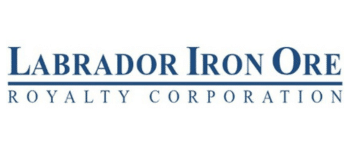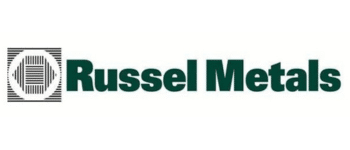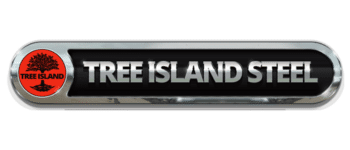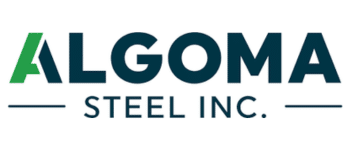From Mill to Market: Let’s Look at These Canadian Steel Stocks
Key takeaways
Steel Demand is Tied to Economic Growth: The steel industry benefits from strong infrastructure spending, automotive production, and industrial activity, making companies like Algoma Steel and Stelco well-positioned for growth during economic expansions.
Green Steel is the Future: The shift toward lower-emission steel production, including electric arc furnaces and high-grade iron ore pellets, is creating new opportunities for companies like Algoma Steel and Labrador Iron Ore, which are aligning with global decarbonization efforts.
Cyclicality and Price Volatility Matter: Steel and iron ore prices fluctuate based on global demand, trade policies, and raw material costs, making companies like Russel Metals vulnerable to economic downturns but also primed for strong gains when market conditions improve.
3 stocks I like better than the ones on this list.One of the richest men in history struck gold in the steel business.
Andrew Carnegie arrived in the United States as a penniless 12-year-old in 1848 and immediately got to work. After a stint in the railroad business, Carnegie started investing in the steel industry in the 1870s, using his connections in local railroads to get sweetheart rail contracts.
By the 1890s, Carnegie Steel was the largest steel company in the nation, eventually merging with various competitors to create the mammoth U.S. Steel.
More than 100 years later, steel is integral to the world’s economy. Asia has become a significant producer as nations like China use modern production capabilities to build vast tracts of high rises. Steel is also used to manufacture heavy machinery, weapons, and energy products for the energy industry.
Canada’s steel industry has also seen significant changes over the years. Stelco dominated the space for years, but the Hamilton-based steel producer faced substantial challenges that eventually culminated in its bankruptcy. Then, it was acquired by Cleveland Cliffs in 2024.
ArcelorMittal became the largest steel producer in Canada after its 2006 acquisition of Dofasco. The Luxembourg-based company is also the world’s largest producer, operating in all sorts of global markets. It is not the largest producer anymore, coming in at 2nd, but is still a dominant force.
Just know that investing in steel stocks, or any commodity based stock for that matter, is not recommended for beginners. They have complex, cyclical business models. If you’re looking for beginner type stocks, have a read of this article.
Let’s take a closer look at some Canadian stocks in the steel industry, including the five best steel stocks Canadians may want to add to their portfolio.
What are the top Canadian steel stocks to buy right now?
Passive income play on iron ore
Labrador Iron Ore Royalty Corp (TSE:LIF)

Labrador Iron Ore Royalty Corporation (LIF) is a royalty company that holds a stake in the Iron Ore Company of Canada (IOC), one of the country’s largest producers of high-grade iron ore pellets. Instead of mining itself, LIF earns royalties and dividends from IOC’s operations, making it a unique way to gain exposure to iron ore prices while benefiting from steady cash flow.
P/E: 11.0
5 Yr Revenue Growth: 3.2%
5 Yr Earnings Growth: -3.2%
5 Yr Dividend Growth: 24.6%
Yield: 10.0%
Leading metals distributor in North America
Russel Metals (TSE:RUS)

Russel Metals is one of Canada’s largest metals distribution companies, supplying steel, aluminum, and other industrial metals to customers across North America. The company operates in three key segments: metals service centers, energy products, and steel distribution, making it a diversified player in the steel supply chain.
P/E: 14.5
5 Yr Revenue Growth: 3.0%
5 Yr Earnings Growth: 17.3%
5 Yr Dividend Growth: 1.8%
Yield: 4.3%
Niche steel manufacturer for construction and industrial uses
Tree Island Steel (TSE:TSL)

Tree Island Steel specializes in manufacturing wire products, nails, and other fabricated steel products used in construction, agriculture, and industrial applications. The company operates primarily in North America, serving residential and commercial construction markets with reinforcing steel, fencing, and fasteners.
P/E: –
5 Yr Revenue Growth: -%
5 Yr Earnings Growth: -%
5 Yr Dividend Growth: -%
Yield: -%
Canadian steelmaker undergoing modernization
Algoma Steel (TSE:ASTL)

Algoma Steel is one of Canada’s largest integrated steel producers, supplying hot and cold rolled steel to industries such as automotive, construction, and energy. The company is in the process of transitioning to electric arc furnace (EAF) technology, which will significantly reduce emissions and enhance efficiency.
P/E: –
5 Yr Revenue Growth: -1.2%
5 Yr Earnings Growth: -%
5 Yr Dividend Growth: -%
Yield: 3.4%


